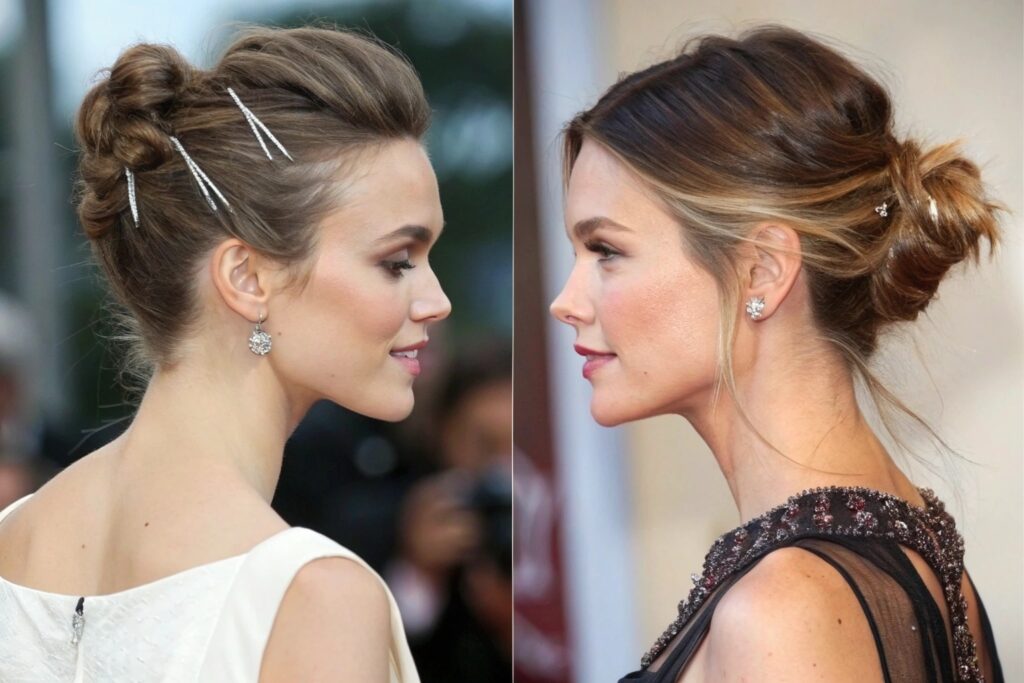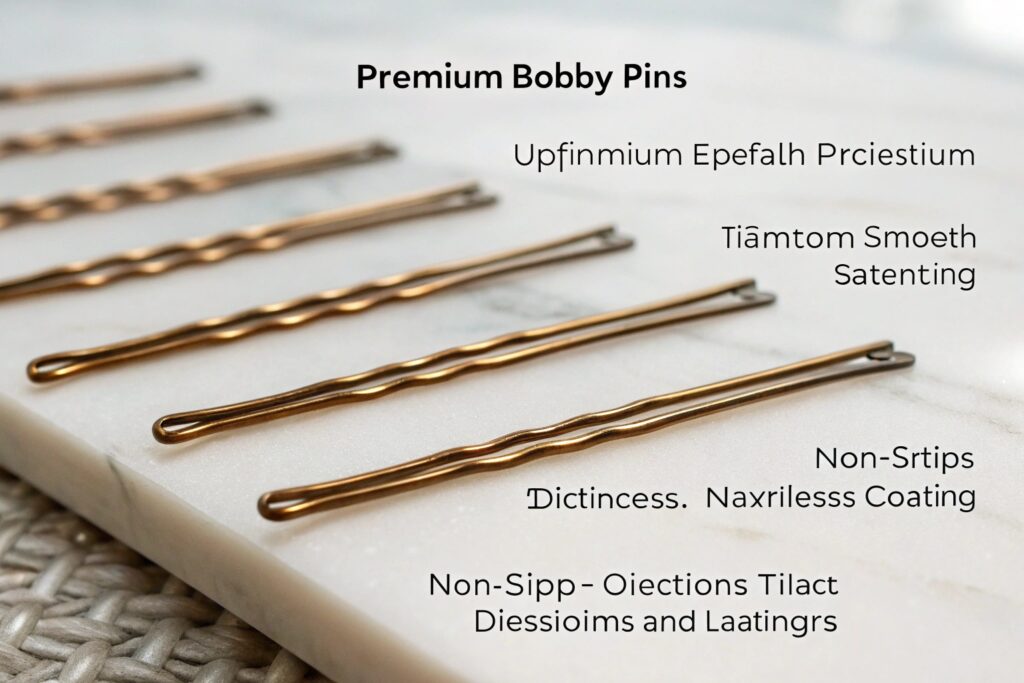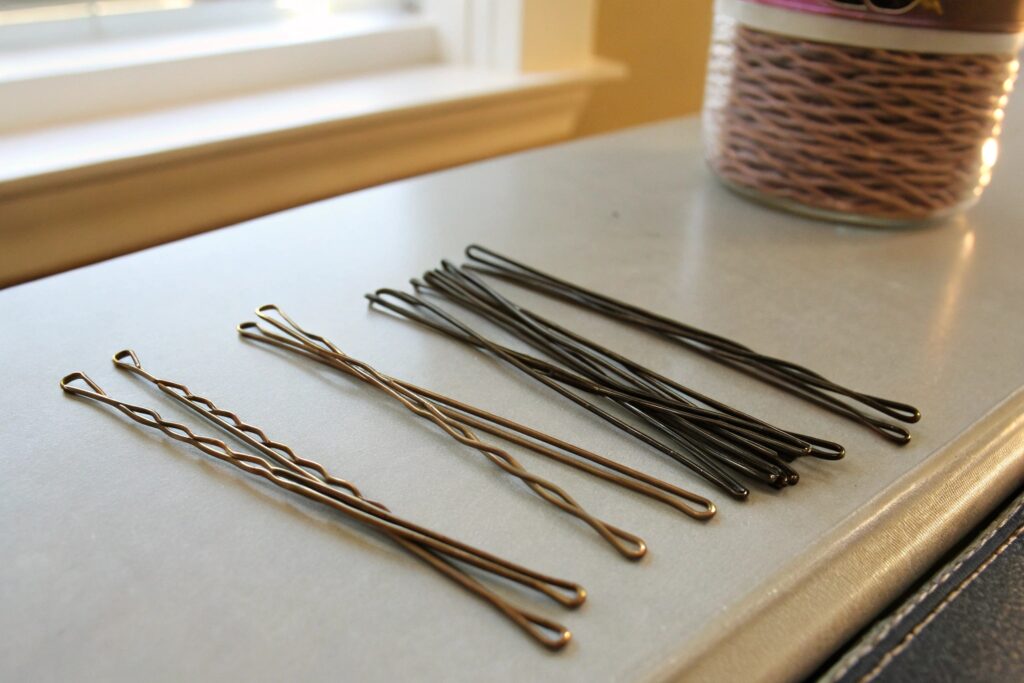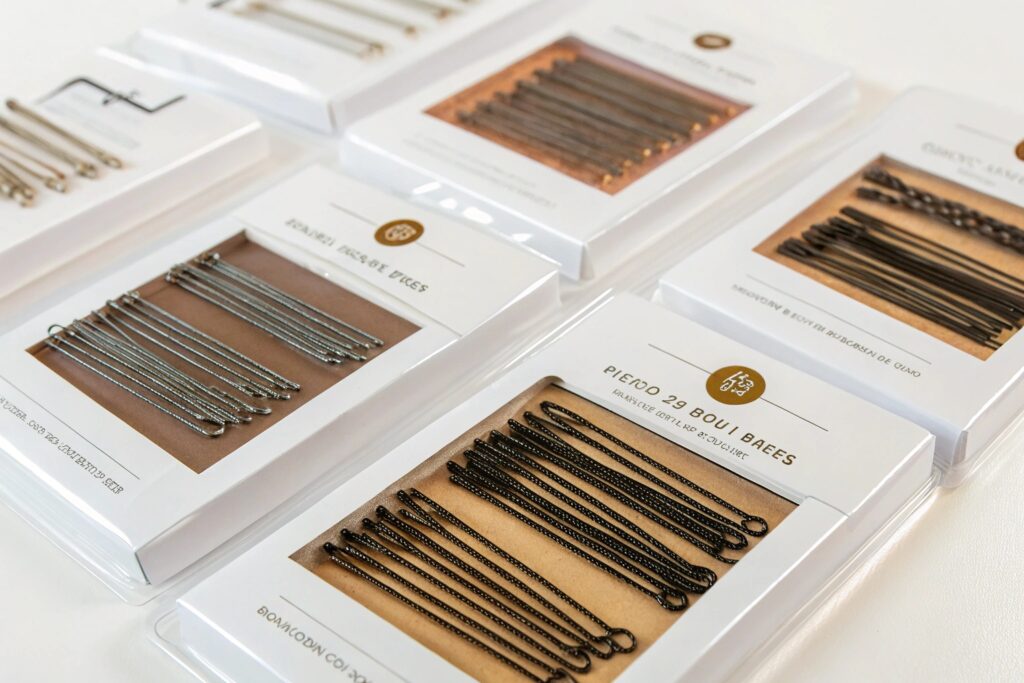Many international buyers complain that bobby pins from some suppliers feel flimsy, bend too easily, or slip out of the hair. For e-commerce sellers and retail buyers, this creates returns, bad reviews, and brand damage.
A bobby pin factory can ensure consistent quality by using precise mold technology, rigorous tension testing, and strict surface treatment processes at every step of production.
At HairAcc, we manufacture millions of bobby pins per month. But more importantly, we ensure every batch meets the strength, grip, and safety expectations of our clients worldwide. Here’s how we do it—and what you should check before choosing a factory.
How to use bobby pins effectively?
A lot of consumers struggle with bobby pins falling out or twisting. But often, the problem is technique—or poor pin quality.
To use bobby pins effectively, insert the wavy side down for better grip and choose pins with firm tension and a secure coating.

Why does orientation matter when using bobby pins?
Most people don’t realize the wavy side of a bobby pin is meant to face the scalp. It helps grab more hair and reduces slippage. But this only works if the pin itself has enough spring tension. In our factory, we test each batch for opening resistance using specialized tension gauges to ensure secure grip without painful pressure.
How does the factory coating impact usage?
Factory coatings are critical. Low-quality paint chips easily and creates friction. At HairAcc, we use hypoallergenic, baked-on coatings for smooth insertion and rust resistance. This is especially important for buyers supplying beauty salons or premium retail brands.
What works better than bobby pins?
Buyers often explore alternatives, especially for niche styles like updos or heavy-duty hold.
While claw clips, hair ties, or U-pins offer alternatives, bobby pins remain the most precise and versatile option for controlled styling—when manufactured correctly.

When are bobby pins not enough?
For thick or slippery hair types, regular bobby pins may struggle to hold. That’s why we offer customized pin lengths, wider grip versions, and extra-strong tension options. Our OEM clients often request dual-coating or rubber-dipped tips for specific demographics like bridal or Afro-textured hair users.
Should factories offer both bobby pins and alternatives?
Absolutely. A professional factory should be able to advise you not just on pins, but also offer alternatives like U-pins or sectioning clips. At HairAcc, we supply a full range and help buyers build curated accessory bundles that fit their audience.
How to get bobby pins to actually hold?
Hold strength isn't just about insertion—it's about the way the pin is made.
To make bobby pins hold securely, they must be manufactured with precision tension, proper wave depth, and a non-slip coating finish.

What technical details affect holding power?
Key factors include:
- Wire thickness (1.5mm–2.0mm)
- Spring tension (measured in N/mm)
- Wave depth (must match factory spec templates)
- Tip coating (for hair-safe ends that resist slipping)
At HairAcc, we control all of these in-house. We use CNC-bent wire machinery that maintains tolerance within 0.05mm across batches, giving consistent bite force every time.
| Feature | Low-Quality Pins | HairAcc Standard Pins |
|---|---|---|
| Wire Uniformity | ±0.15mm | ±0.05mm |
| Tension Accuracy | Inconsistent | Machine-tested |
| Coating Thickness | <15μm | 20–25μm |
| Tip Sealing Quality | May crack | Seamless rounded tips |
Should you request grip testing data?
Yes. Our buyers often request test videos or QC reports that show pin hold under weight stress or vibration. If your supplier can’t provide this, it’s a red flag.
Why do bobby pins not stay in my hair?
Even when used correctly, pins sometimes slide out. This can frustrate consumers—and cost you customers.
Bobby pins often slip due to poor surface grip, weak tension, or cheap coating that loses friction after a few uses.

Which hair types need special pin options?
- Fine or silky hair: Needs matte-coated or rubber-grip pins.
- Thick/coarse hair: Needs wider tension and stronger hold force.
- Curly hair: Requires rounded tips and minimal snagging edges.
At HairAcc, we adjust pin tension and materials based on your customer market. For example, our Russian clients prefer stronger spring pins for thick hair, while our U.S. salon clients prioritize smoother finishes for clients with dyed or delicate hair.
What process ensures non-slip quality?
We use double-bake paint systems and optional rubber dips. Also, our in-line inspection catches any misaligned pins or chipped coatings before packaging. We also recommend offering sets in different lengths and grip levels to cover various needs.
Conclusion
Consistent bobby pin quality doesn’t happen by accident. It requires smart design, technical precision, and strict factory control. At HairAcc, we’ve spent years refining this process so our clients can sell with confidence. Whether you’re targeting salons, supermarkets, or e-commerce, we’re here to help you deliver pins that actually perform.









